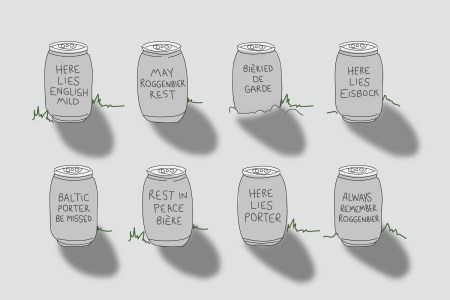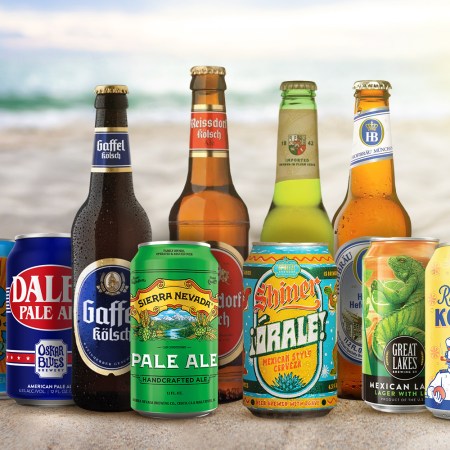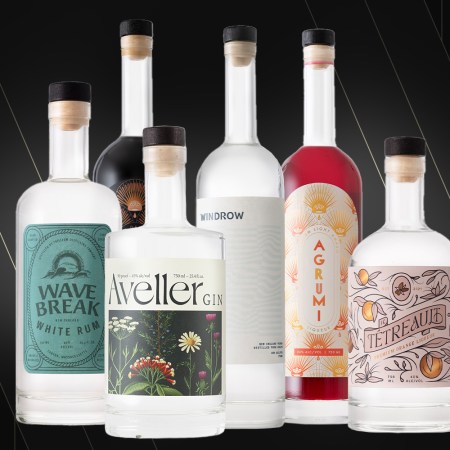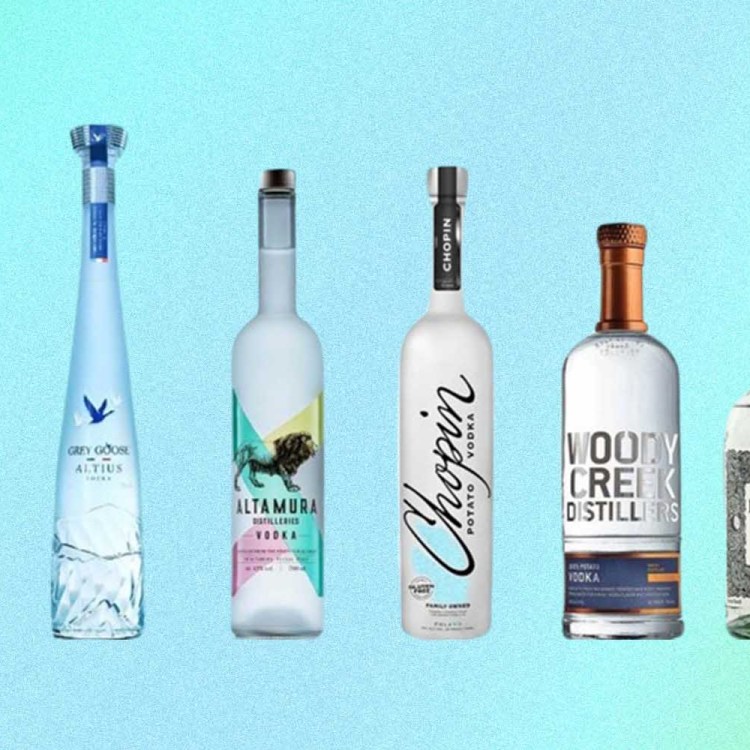At some point in the mid-1980s, the Pepsi Challenge rolled into Burlington, Vermont and set up the taste test in Battery Park. Not quite 10 years old, I marveled at the line that formed to take the blind taste test pitting Pepsi against Coke. Outside of judging the superior cola, the test also forced a confrontation of bias. Suppose the cola I championed outside the challenge was not the one I’d pick in it?
The same phenomenon happens in the beer world, when enthusiasts deliver passionate panegyrics and firm convictions on the superiority of beer in a can, bottle or keg. Subjectivity keeps the debate ongoing, but chemistry and fermentology — alongside a bevy of other packaging factors — do have something to say about it and may challenge your beliefs. Here’s what really makes the difference in the flavor of your beer when it comes to the can, bottle or draft debate.
Packaging vs. Freshness
Just as an artifact uncovered by an archaeologist immediately begins to degrade in the open air and sun, so too does beer the moment it leaves the mother tank and funnels into cans, bottles and kegs. By and large, these chemical changes are not welcome, and preserving the freshness and flavor of beer depends a lot on keeping out the culprits.
The most dangerous element is oxygen, explains Chuck Skypeck, technical brewing projects director for the Brewers Association. “The way that beer arrives at its best state to the consumer is about the brewer’s ability to put their beer into that package with a minimum amount of exposure to oxygen,” Skypeck explains. Oxygen impacts the flavor by essentially turning compounds in the beer into other, less desirable compounds that dull flavor and make beer taste stale. Oxygen gets many access points, too, in the path from source tank to consumer. Not only do you have to move beer between tanks during production, potentially exposing it to air, you also have to open the container to put beer in it. Bottles and cans can be damaged on the production line, or a pump seal might leak, too — again putting the onus on the brewer’s skill, system and equipment.
Light and temperature also impact beer flavor for the worse, too, in part by accelerating oxidative reactions. Ultraviolet light also isomerizes hops, creating a “skunky” flavor. As such, transportation and storage practices — for example, if the truck is refrigerated — can make a significant difference on the flavor in your pint glass.
Bottled Beer
Just 10 years ago, the bottle was king of the craft brew world. But that’s almost entirely changed thanks to the rapid expansion of brewers into canning since then. Nevertheless, bottles offer the aesthetic and tactile pleasure of drinking from glass, which many drinkers simply prefer — especially if they are not pouring it into a glass.
However, oxygen is present in the tip, or “head space,” in a bottle and can affect the beer over time. That said, Skypeck considers that disadvantage of bottles “kind of a wash” with cans, whose wider mouth is open to more oxygen during canning. As for light, brown glass works best and anything else may put that beer flavor and freshness in danger.
“The perfect example of that is the skunkiness you get in Heineken. If you get a Heineken on draft, it tastes completely different than Heineken in a bottle because it’s been exposed to light,” Skypeck illustrates.
That said, some types of beer particularly thrive in bottles. These “bottle-conditioned” beers also minimize oxidation, Skypeck points out. “A certain amount of something fermentable, most likely sugar, is added to that bottle before it’s sealed,” he explains. “The first thing a yeast does, when it’s that environment, is reproduce before it ferments, and the reproduction process of yeast requires oxygen.” That’s what accounts for the constant high quality of flavor in a Sierra Nevada Pale Ale, which he notes is bottle-fermented. “You very rarely ever taste a stale Sierra Nevada Pale Ale,” he says.
These Craft Beer Styles Are Dying. Can They Be Saved?
Will the roggenbier or the English mild ever find a wide appeal again?Canned Beer
Today’s beer cans are not your granddaddy’s. Not only are they tremendously more popular than even just 10 years ago, they come in a range of sizes — the standard 12-ounce, the trendy 16-ounce tallboy, the 19.2-ounce stovepipe and 32-ounce crowler — and they also sport eye-catching labels that are almost an art form in themselves.
More importantly for beer taste, cans have developed an epoxy lining that prevents the beer from touching any part of the metal, solving flavor impact issues. However, other issues can insert a metallic taste in beers, and it’s possible for the nose to pick up notes from the metal when drinking directly from the can that can impart a metallic tang to the flavor, perhaps from the metal seal broken to open the can. Pour the same beer into a glass, and watch that disappear.
That said, cans — like bottles — are susceptible to improper storage conditions and transport, which can impact the flavor. Furthermore, the canning process does leave more beer open to the air than a bottle. Indeed, researchers at Colorado State University studying the effects of packaging on amber ale and IPA saw a significantly higher concentration of esters — the oxygen-sensitive, yeast-derived compounds that give ales their fruity aromas and flavors — in bottled versions versus canned versions of amber ale. The reason, they postulate, was the wider opening in cans. That said, “Amber-colored beers tend to be a little bit more susceptible to oxidation,” Skypeck notes, as the malts have been roasted, heated and stewed and already semi-oxidized.
Kegs
Common sense says that beer will always taste better from the keg, as it’s often closer to the source, especially in tap rooms, but also bartenders are better able to control carbonation and oxygen pressure. Kegged beer also tends to get consumed faster than bottled or canned beer, further boosting the freshness. Very importantly, beer poured from a keg forms a head, which is a key part of the overall flavor. Unleashing the head also smooths the flavor, as it dissipates some of the carbon dioxide. That’s also why when you drink directly from the bottle and can, you put more carbon dioxide in your belly and spawn more belches.
That said, the flavor of draft beer can suffer immensely in certain situations. Perhaps the worst influence is sanitation and hygiene. Not only do the kegs needs to be properly cleaned and prepared, so do the draft lines to the tap. If attention to sanitation is poor, a number of issues can arise to make beer taste badly, including mold, bacteria and calcium oxalate, aka “beer stone.” Taprooms tend to be vigilant about this, but any restaurants serving the beer may not. As an example, Skypeck refers to a recent experience with bad-tasting beer at a restaurant. “I asked about their draft line maintenance,” he says. “The response was, “We’re supposed to clean them?”
Know Your Beer
Ultimately, one of the best things you can do to make sure you get the best flavor from a beer, regardless of packaging, is to know your beer — and brewer. It’s their skill, methods and attention to the packaging process that makes the greatest difference in the taste in the bottle, can or keg. Always pouring your beer into a glass, especially the proper kind of glass, can also go a long way to turning a “meh” into a “wow.” Furthermore, checking your biases at the door may lead you to greater access and appreciation of beer flavor.
Join America's Fastest Growing Spirits Newsletter THE SPILL. Unlock all the reviews, recipes and revelry — and get 15% off award-winning La Tierra de Acre Mezcal.

























